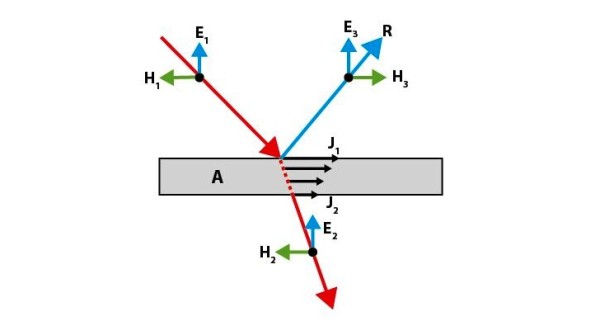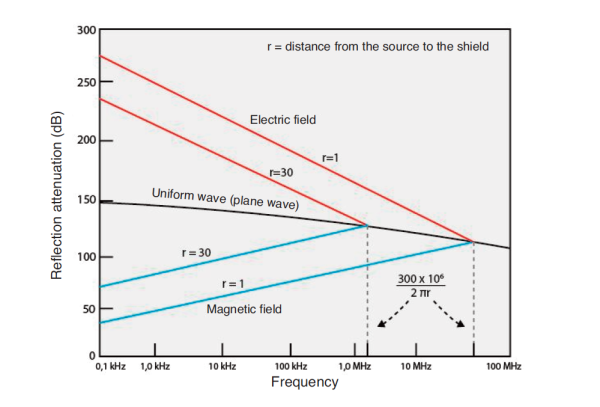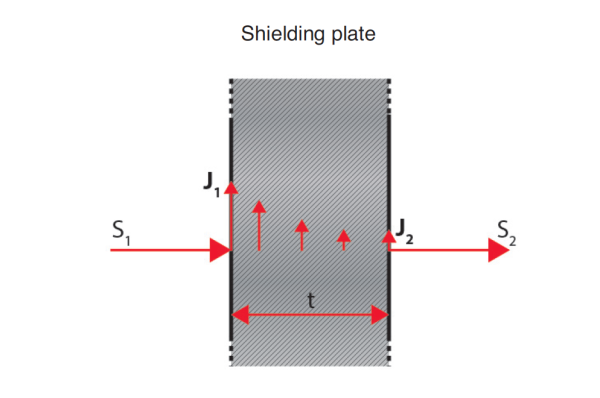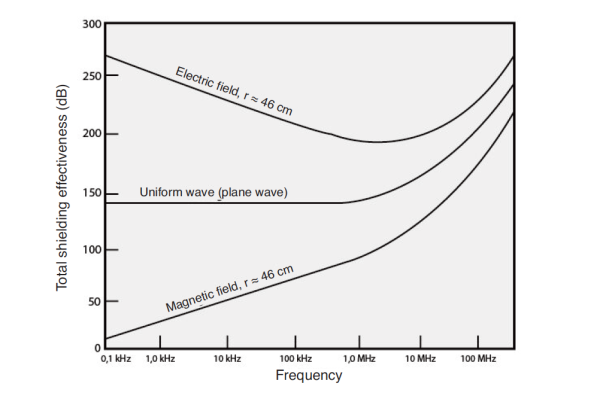EYE ON . Shielding is one of the concepts associated with EMC. Often, for example, mechanical engineers are tasked to build a shielding box, without further specification of ie operating frequencies or desired attenuation.
How much attenuation is reasonable to expect?
Shielding
Here are some rough reviews of shielding levels:
0 – 10 dB: insignificant shielding
10 – 30 dB: minimum threshold for meaningful shielding
30 – 60 dB: intermediate shielding
60 – 90 dB: good shielding
90 – 120 dB: very good shielding. (120 dB is extremely difficult to achieve.)
The task of the shielding is to create zones whose electromagnetic environment differs from each other. For example, inside a shielded space (sometimes called Faraday’s cage), a circuit can work undisturbed, ie without being affected by an incident electromagnetic field on the outside. The shield is effective in both directions and also attenuates the energy leakage from the circuit inside out. Note that such an ideal shielding box does not have any openings, slots or connectors. It floats freely and is completely sealed, no leakage.
Only electrically conductive materials are suitable for shielding electromagnetic fields (see Figure 1). The better the conductivity is, the more effective is the shield. In general, homogeneous plates of all common metals have good enough shielding effectiveness (SE) in most frequency ranges. The exception is for low frequency magnetic fields, where most metals have low shielding effectiveness, SE. For frequencies below about 10 Hz, metals of high relative permeability provide effective shielding.
To attenuate fields in the frequency range 10 – 1000 kHz thick metal with good conductivity, ie aluminum or copper, is needed.

Shielding effectiveness (SE) (see Figure 1 and 4) of metals can be divided in two main contributors: Reflection attenuation (R) (see Figure 2), and Absorption attenuation (A) (see Fig. 3).



It’s not so easy to design a shielding box as many designers seem to belief. By my experience a lot of resources (money and time) has been invested on shielding, sometimes for too little benefit. Trying to build or buy expensive so-called ”EMC proof” enclosures would not help if you leave all the cables and wires that pass through the shield without measures.
In the next article we will take a look at the difficulties and pitfalls.
Miklos Steiner, Ulf Nilsson
info@justmedia.se


